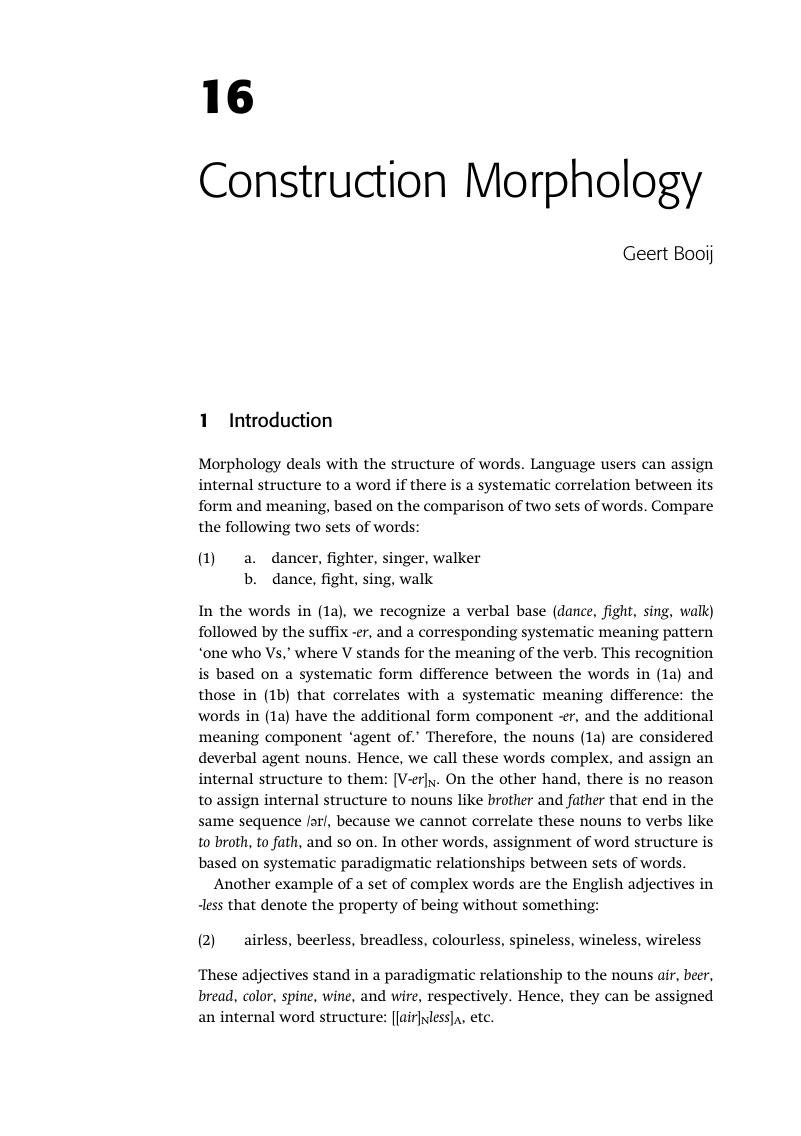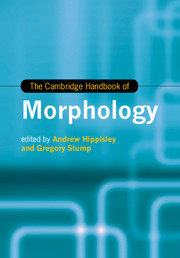Book contents
- The Cambridge Handbook of Morphology
- Cambridge Handbooks in Language and Linguistics
- The Cambridge Handbook of Morphology
- Copyright page
- Contents
- Contributors
- Acknowledgments
- Abbreviations
- 1 Introduction
- Part I Foundations of Morphological Theory
- Part II Issues in Morphological Theory
- Part III Morphological Principles
- Part IV Morphological Frameworks
- 13 Classical Morphemics: Assumptions, Extensions, and Alternatives
- 14 Natural Morphology
- 15 Distributed Morphology
- 16 Construction Morphology
- 17 Paradigm Function Morphology
- 18 Network Morphology
- Part V The Role of Morphology in Theories of Phonology and Syntax
- Part VI Domains for the Evaluation of Morphological Theories
- Index of languages
- Index of names
- Index of subjects
- References
16 - Construction Morphology
from Part IV - Morphological Frameworks
Published online by Cambridge University Press: 21 January 2017
- The Cambridge Handbook of Morphology
- Cambridge Handbooks in Language and Linguistics
- The Cambridge Handbook of Morphology
- Copyright page
- Contents
- Contributors
- Acknowledgments
- Abbreviations
- 1 Introduction
- Part I Foundations of Morphological Theory
- Part II Issues in Morphological Theory
- Part III Morphological Principles
- Part IV Morphological Frameworks
- 13 Classical Morphemics: Assumptions, Extensions, and Alternatives
- 14 Natural Morphology
- 15 Distributed Morphology
- 16 Construction Morphology
- 17 Paradigm Function Morphology
- 18 Network Morphology
- Part V The Role of Morphology in Theories of Phonology and Syntax
- Part VI Domains for the Evaluation of Morphological Theories
- Index of languages
- Index of names
- Index of subjects
- References
Summary

- Type
- Chapter
- Information
- The Cambridge Handbook of Morphology , pp. 424 - 448Publisher: Cambridge University PressPrint publication year: 2016
References
- 24
- Cited by



